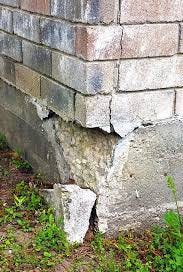Last month, we spent several posts focusing on how businesses are dealing with, and struggling with, the demands of the currently-unfolding future on their internal and external operations. These challenges are even more severe for the thousands of non-commercial organizations that make our lives possible — the nonprofits, governent departments, chambers of commerce, economic development agencies and social service providers who take care of literally every “externality” that those for-profits have the luxury of pushing off to someone else. As much as some quarters like to throw mud at them, these organizations are the ones that keep us all out of a Machiavellian abyss.
Our current nonprofit organization model dates from the early 1900s, with an additional boost in the 1960s and 1970s — and their Industrial Era underpinnings show through clearly once you stop taking our usual set of assumptions for granted. Here are a few:
Externalities aren’t important, so the orgs that deal with externalities aren’t important. We have all so deeply absorbed that assumption that says that business drives the world, that we systematically underestimate the scope and impact of the nonprofit sector. We assume that it will - and should - live on scraps. because the externalities of our economic transactions are invisible to those of us doing the transacting. Even when we can see the presence of those externalities — hunger, drug abuse, environmental catastrophe, inability to earn a liveable wage — we massively underestimate the actual cost of addressing them. Because they’re externalities to the “real” work, and we’ve been taught to regard them as fringe bits, an afterthought. And we half-ass dealing with them, like an afterthought. And because of that, we don’t actually fix anything, systemically, We just apply a little plaster and paint to a building whose foundations is cracking apart.
To be clear: the “we” in that paragraph is all of us, not just bloated billionaires or faceless bureaucrats. I play a role in that structural failure when I block myself off from learning about yet another natural disaster, because I already feel overwhelmed by the ones I know about and can’t do anything about. I am part of that structural failure when I send $20 to a GoFundMe, knowing that that is just a drop in the bucket, that might help that person a little, but isn’t solving anything. And I play a role in that structural failure when I contort the purpose of the nonprofit I manage to fit into the weirdly-shaped box that a funder (probably another nonprofit) needs me to fit into before they can get permission from their for-profit funding reprensentatives to give me anything.
We are the experts, not you. Industrial era thinking creates experts and non-experts, people who Know Things and people who are recipients of the Things That The Experts Know. Our early 1900s roots that I mentioned at the top came out of the Progressive Era — the understandable response to the excesses of the early Industrial Era. But, especially in social services and community development, a very Industrial-looking pattern developed:
Expert proclaims that a certain thing needs to be done, other Experts smile and nod and do the thing, unexpected consequences pour out in every direction, the people who were supposed to benefit from the thing suffer, and the Experts move on to some other thing, without having ever developed real understanding of or empathy for the people they were supposed to be helping. For urban planners, this story plays out in urban renewal, high rise affordable housing, highway bypass construction, downtown malls, festival parks, gentrification, and decades of distrust from the communities that were supposed to be helped. In other professions’ histories, replace those words with asylums, poor houses, chain gangs, combined sewers, runoff…..
We have consistently concluded that the people who have deep lived experience in a place, but not degrees and resumes, aren’t capable of participating in finding the correct answers to complex challenges. Sometimes we do a better job today than we did in the 1920s and 1960s of recording their comments in an appendix, but far too often that’s the furthest we get (especially when the people we’re supposed to be helping are poor, disabled, or otherwise on the margins.
We will talk about these structural challenges in how we do community services this month - and how these challenges and more hamstring our efforts to create better places. And we will look at ways that we can at least start to create more Future Ready organizations.


